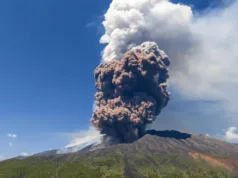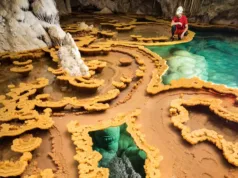Mount Yasur, a majestic and active volcano, stands tall on the remote archipelago of Vanuatu in the South Pacific Ocean. With its consistent eruptions and accessibility, Mount Yasur has captivated the interest of adventurers, scientists, and curious travelers from around the world. Its remarkable beauty, geological significance, and cultural importance make it a truly unique natural wonder.
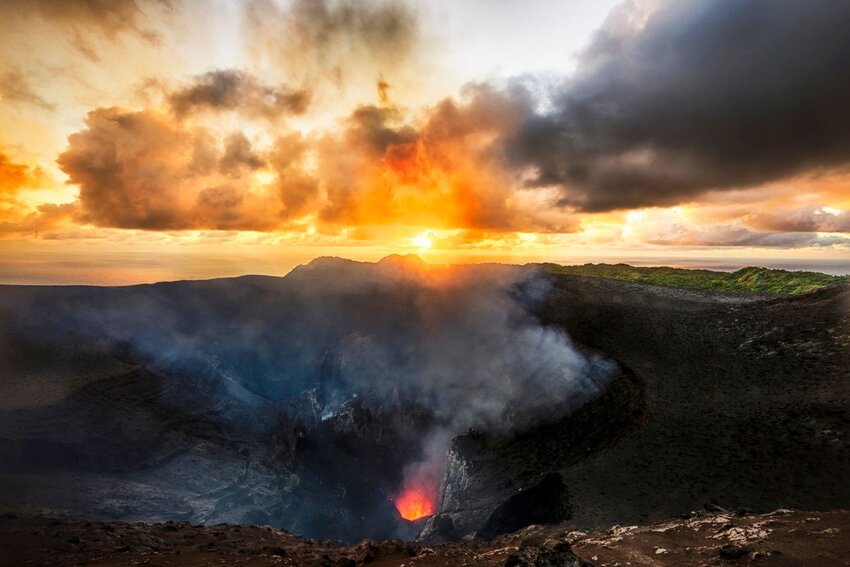
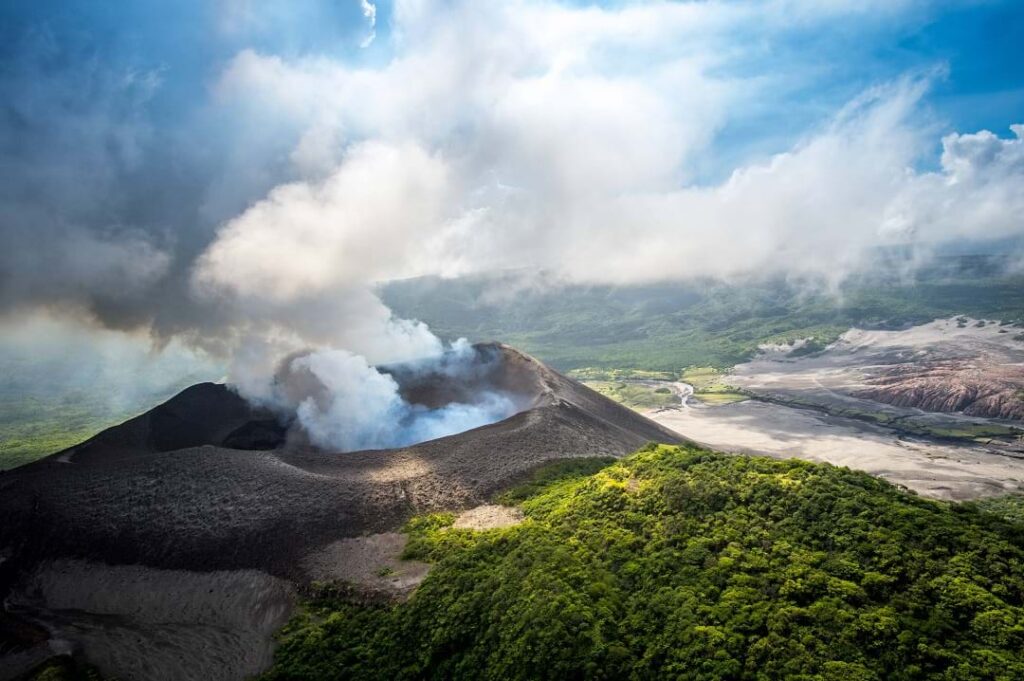
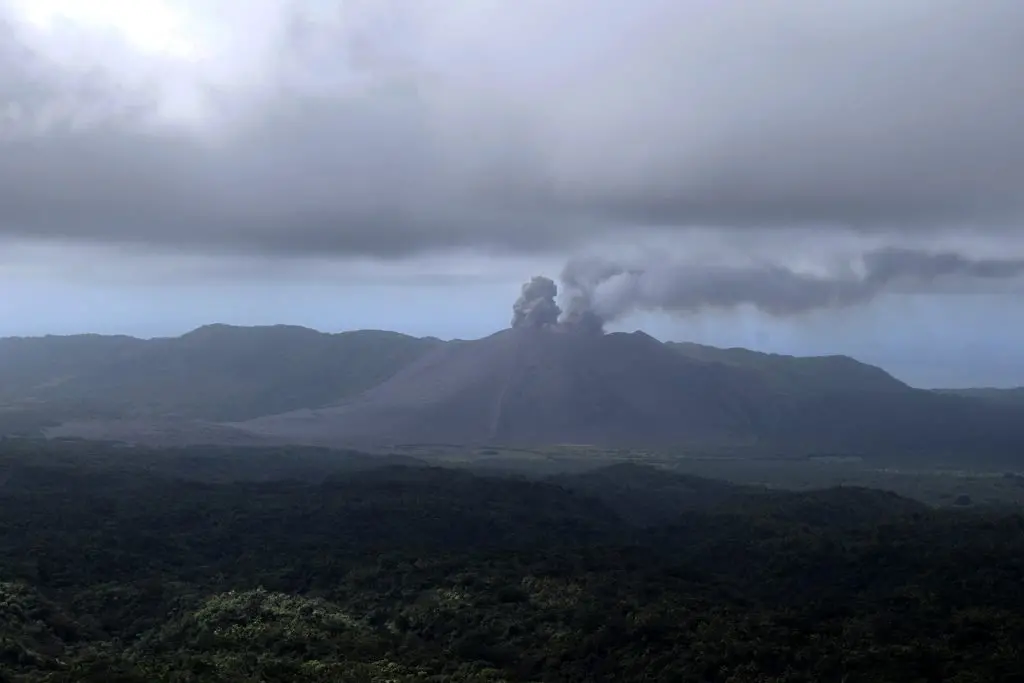
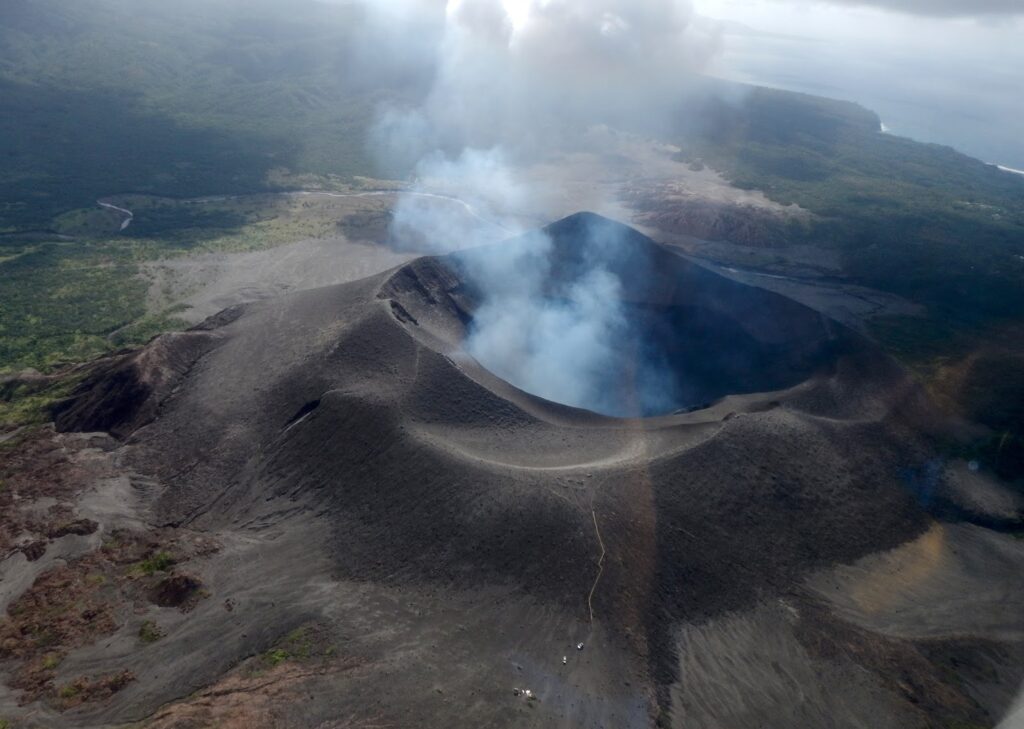
Located within the Pacific Ring of Fire, Vanuatu is known for its active volcanic activity, and Mount Yasur takes center stage as one of its most renowned attractions. Rising approximately 361 meters (1,184 feet) above sea level, this stratovolcano holds a special place among the many volcanoes dotting the archipelago.
What sets Mount Yasur apart is not only its impressive stature but also its consistent eruptions, making it one of the few continuously active volcanoes on Earth. The volcano’s frequent explosive displays, with glowing lava bombs and ash clouds billowing into the sky, create a mesmerizing spectacle that draws visitors and researchers alike.
Beyond its geological significance, Mount Yasur holds cultural and spiritual importance to the Ni-Vanuatu people, the indigenous inhabitants of Vanuatu. For centuries, they have revered the volcano as a sacred site, incorporating its volcanic activity into their belief systems and traditional practices.
In this article, we delve into the captivating geology of Mount Yasur. We explore its formation, the volcanic processes at work, and the various features that define its rugged landscape. We also examine the hazards associated with its eruptions, the ongoing research efforts, and the delicate balance between tourism and preserving the natural and cultural heritage of the area.
Join us on this journey of discovery as we unravel the geological secrets of Mount Yasur, shedding light on the powerful forces that shape our planet and the remarkable interplay between nature, culture, and the awe-inspiring beauty of this magnificent volcano.
Geologic Formation of Mount Yasur
Mount Yasur is an active volcano located on Tanna Island in Vanuatu, an archipelago in the South Pacific Ocean. The geologic formation of Mount Yasur can be attributed to the tectonic activity in the region and the subduction of the Pacific Plate beneath the Australian Plate.
Mount Yasur is part of the larger Yenkahe volcanic complex, which includes several other volcanic cones. The formation of this complex is associated with the movement of the Australian Plate towards the east-northeast, where it converges with the Pacific Plate. As the Pacific Plate subducts beneath the Australian Plate, it generates intense heat and pressure, leading to the melting of rocks in the Earth’s mantle.
The melted rock, known as magma, rises to the surface through cracks and weaknesses in the Earth’s crust. This process forms a conduit or vent through which volcanic activity can occur. Over time, repeated eruptions and the accumulation of erupted materials build up the cone-shaped structure of Mount Yasur.
Mount Yasur is characterized by Strombolian eruptions, which are relatively mild explosive eruptions that release volcanic gases, ash, and volcanic bombs. These eruptions are caused by the buildup of gas pressure within the magma as it rises to the surface. When the pressure becomes too great, it causes explosions that eject material into the air.
The repeated eruptions of Mount Yasur have contributed to its conical shape, with layers of volcanic material, including ash, lava, and pyroclastic deposits, accumulating over time. The ongoing volcanic activity has also resulted in the formation of a large crater at the summit, which is constantly active and emits ash, gas, and occasional lava fountains.
It’s important to note that as an active volcano, Mount Yasur poses potential hazards to the surrounding area, including ashfall, gas emissions, and the possibility of larger explosive eruptions. Local authorities closely monitor the volcano’s activity and have established safety measures to protect residents and visitors.
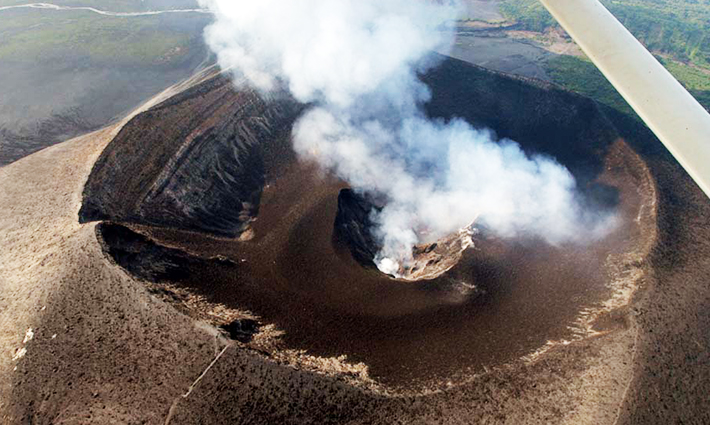
Volcanic Activity and Eruptions of Mount Yasur
Mount Yasur, located on Tanna Island in Vanuatu, is known for its ongoing volcanic activity and frequent eruptions. The volcano exhibits a specific type of eruption known as Strombolian activity. Here are some key characteristics of the volcanic activity and eruptions of Mount Yasur:
- Strombolian Eruptions: Mount Yasur is famous for its Strombolian eruptions, named after the volcano Stromboli in Italy. Strombolian eruptions are relatively mild explosive eruptions characterized by frequent bursts of gas, ash, and volcanic bombs. These explosions occur when gas bubbles in the magma rise to the surface and burst, ejecting material into the air.
- Persistent Activity: Mount Yasur has been in a state of near-continuous activity for centuries, with frequent eruptive episodes. The volcano’s activity is characterized by regular explosions, emitting ash clouds, gases, and incandescent volcanic bombs.
- Crater and Vent System: Mount Yasur has a well-defined summit crater, which is accessible for observation by visitors. The crater is constantly active, and volcanic activity is concentrated in multiple vents within the crater. The explosions usually occur from one or more of these vents, producing spectacular displays of lava and ash.
- Eruption Styles: The eruptions of Mount Yasur can vary in intensity. Some eruptions are relatively small and produce short bursts of volcanic material, while others can be more powerful, launching volcanic bombs higher into the air and generating louder explosions.
- Ash Plumes and Lava Flows: Eruptions from Mount Yasur often generate ash plumes that can reach several hundred meters in height. These ash plumes may be accompanied by lava flows, which can cascade down the slopes of the volcano.
- Hazardous Conditions: The ongoing volcanic activity of Mount Yasur poses potential hazards to the surrounding area. Ashfall, volcanic gases (including sulfur dioxide), and volcanic bombs can present risks to people and infrastructure in the vicinity of the volcano. Local authorities closely monitor the volcano and establish safety measures to protect residents and visitors.
It’s important to note that the behavior of volcanoes can change over time, and volcanic activity can be unpredictable. Therefore, it is crucial to rely on local volcano monitoring and follow the guidance of authorities when visiting or living near active volcanoes like Mount Yasur.
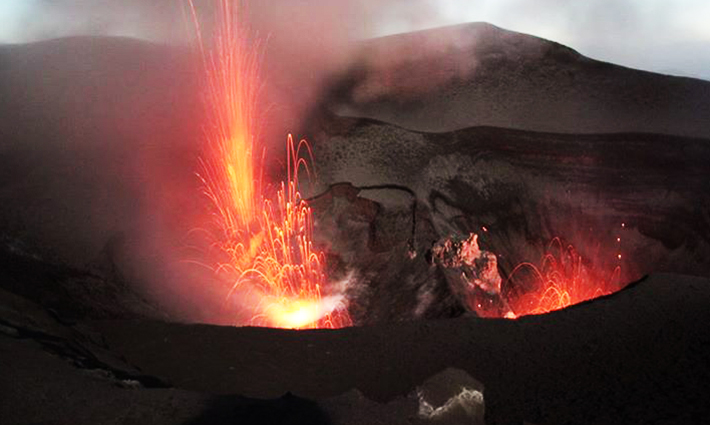
Historical eruptions of Mount Yasur
Mount Yasur has a long history of volcanic activity, with recorded eruptions dating back several centuries. Here are some notable historical eruptions of Mount Yasur:
- 1774 Eruption: The first recorded eruption of Mount Yasur was in 1774. It was described by Captain James Cook during his expedition to the Pacific. Cook observed intense volcanic activity, including explosions and ash emissions.
- 1882-1883 Eruption: This eruption lasted for about a year and caused significant damage to the surrounding area. It generated powerful explosions, lava fountains, and ash plumes. The eruption was characterized by strong detonations that could be heard from several kilometers away.
- 1911 Eruption: Another significant eruption occurred in 1911, causing damage to nearby villages. The explosions during this eruption were described as violent and produced ash clouds that reached considerable heights.
- 1940-1941 Eruption: This eruption lasted for several months and had a major impact on the local population. It caused the evacuation of nearby villages due to the danger posed by volcanic bombs and ashfall. Lava fountains were observed, and the volcano emitted large amounts of ash and gases.
- 1968 Eruption: The 1968 eruption of Mount Yasur was particularly powerful and caused widespread damage. It produced lava flows that reached the sea, and explosions ejected large volcanic bombs onto the surrounding slopes.
- Ongoing Activity: Mount Yasur has remained consistently active in recent decades, with frequent Strombolian eruptions and ongoing volcanic activity. It continues to attract visitors who are captivated by the volcano’s continuous displays of explosions and lava emissions.
It’s worth noting that these are just a few notable eruptions, and Mount Yasur has experienced numerous smaller eruptions and periods of heightened activity throughout its history. The volcano remains an active and closely monitored site, with measures in place to ensure the safety of residents and visitors in the surrounding area.

Types of volcanic eruptions at Mount Yasur
At Mount Yasur, a stratovolcano located on Tanna Island in Vanuatu, the predominant type of volcanic eruption is known as Strombolian activity. However, other types of eruptions can also occur. Here are the main types of volcanic eruptions that have been observed at Mount Yasur:
- Strombolian Eruptions: Strombolian eruptions are the most common type of eruption at Mount Yasur. They are characterized by frequent, relatively mild explosive bursts of gas, ash, and volcanic bombs. These eruptions occur when gas bubbles in the magma rise to the surface and burst, propelling material into the air. Strombolian eruptions at Mount Yasur often create glowing lava fountains and emit ash plumes.
- Vulcanian Eruptions: Although less common than Strombolian eruptions, Mount Yasur has occasionally experienced Vulcanian eruptions. These eruptions are more explosive and violent than Strombolian eruptions and involve the sudden release of pressurized gas and magma. Vulcanian eruptions can produce ash columns and pyroclastic flows, which are fast-moving currents of hot gas, ash, and volcanic debris.
- Phreatomagmatic Eruptions: Phreatomagmatic eruptions occur when water comes into contact with magma, leading to explosive activity. While less frequent at Mount Yasur, the presence of groundwater or surface water can result in phreatomagmatic eruptions. These eruptions generate steam-driven explosions, producing ash, steam, and volcanic projectiles.
It’s important to note that Mount Yasur is primarily characterized by ongoing Strombolian activity. This type of eruption creates a relatively continuous and predictable display of explosions, lava emissions, and ash plumes. The volcano is known for its accessibility, allowing visitors to observe its activity from the crater rim while ensuring their safety with proper precautions and guidance from local authorities.

Characteristics and frequency of eruptions of Mount Yasur
Mount Yasur is known for its frequent and ongoing volcanic activity, characterized by regular eruptions and Strombolian explosions. Here are the key characteristics and frequency of eruptions at Mount Yasur:
- Strombolian Activity: The primary type of eruption at Mount Yasur is Strombolian activity. These eruptions are relatively mild and characterized by intermittent bursts of gas, ash, and volcanic bombs. The explosions occur when gas bubbles in the magma rise to the surface and burst, ejecting material into the air. Strombolian eruptions at Mount Yasur often create spectacular lava fountains and emit ash plumes.
- Frequency: Mount Yasur is one of the most active volcanoes in the world, with near-continuous eruptive episodes. It has a reputation for its regular and predictable explosions. Visitors can witness the eruptions from the crater rim, as the volcano provides a unique opportunity for observation due to its accessibility and ongoing activity.
- Intensity: While Mount Yasur’s eruptions are generally considered mild to moderate, the intensity can vary. Some eruptions produce small explosions with low-level ash emissions, while others can be more powerful, propelling volcanic bombs higher into the air and generating louder explosions. The intensity of the eruptions can change over time and is influenced by factors such as the gas content and viscosity of the magma.
- Eruption Style: Mount Yasur typically exhibits Strombolian eruptions, which involve discrete explosive bursts at regular intervals. These explosions are typically accompanied by ash plumes, incandescent volcanic bombs, and occasional lava flows. The eruptions are characterized by their repetitive and rhythmic nature.
- Hazardous Conditions: While Mount Yasur’s eruptions are generally manageable, they can pose hazards to the surrounding area. Volcanic hazards include ashfall, volcanic gas emissions (such as sulfur dioxide), and the potential for larger explosive eruptions. The local authorities closely monitor the volcano’s activity and establish safety measures to protect residents and visitors.
It’s important to note that volcanic behavior can be unpredictable, and the frequency and characteristics of eruptions can change over time. Therefore, it is crucial to rely on up-to-date information from local volcano monitoring agencies and follow any advisories or warnings issued for Mount Yasur.
Geologic Features of Mount Yasur
Mount Yasur, located on Tanna Island in Vanuatu, exhibits several distinct geologic features that are associated with its formation and ongoing volcanic activity. Here are the key geologic features of Mount Yasur:
- Stratovolcano: Mount Yasur is a stratovolcano, also known as a composite volcano. It is characterized by its steep, conical shape formed by successive layers of volcanic materials, including lava flows, ash, and pyroclastic deposits. The stratovolcano form is a result of the alternating eruptions of lava and explosive eruptions, building up the cone-shaped structure over time.
- Summit Crater: Mount Yasur has a well-defined summit crater, which is the main vent for volcanic activity. The crater is typically accessible to visitors, allowing them to observe the ongoing eruptions and activity from a safe distance. The crater is constantly active, with frequent explosions and emissions of ash, gases, and volcanic bombs.
- Vent System: Within the summit crater, there are multiple vents through which volcanic activity occurs. These vents serve as conduits for magma and gases to reach the surface. The vent system of Mount Yasur may vary in size and location, and the eruptions can occur from one or more of these vents.
- Ash Plumes: Mount Yasur frequently produces ash plumes during eruptions. These plumes can rise several hundred meters into the air, carried by the force of the volcanic explosions. The ash plumes consist of fine volcanic particles, including pulverized rock and glass shards.
- Lava Flows: Along with explosive activity, Mount Yasur can also generate lava flows during eruptions. These lava flows typically originate from the vent area and cascade down the slopes of the volcano. The composition of the lava can vary, depending on the type of eruption and the magma involved.
- Pyroclastic Deposits: Mount Yasur has a history of explosive eruptions that result in the deposition of pyroclastic materials. Pyroclastic deposits include fragmented volcanic rock, ash, and pumice. These deposits can accumulate around the volcano and contribute to its overall shape and formation.
It’s important to note that as an active volcano, the geologic features of Mount Yasur can evolve over time due to ongoing volcanic processes and eruptions. The volcano is monitored closely by local authorities and scientists to track any changes in activity and assess potential hazards to the surrounding area.
Hazards and Risk Assessment
Mount Yasur, being an active volcano, presents certain hazards to the surrounding area. It is essential to assess these hazards and conduct risk assessments to ensure the safety of residents and visitors. Here are the main hazards associated with Mount Yasur and the process of risk assessment:
- Volcanic Ashfall: Eruptions at Mount Yasur can produce ash plumes that can be carried by winds and result in ashfall in nearby areas. Volcanic ash can disrupt air travel, contaminate water sources, and pose health risks if inhaled. Risk assessment involves monitoring ash plume dispersion models, assessing the potential ashfall distribution, and issuing warnings or advisories accordingly.
- Volcanic Gases: Mount Yasur emits volcanic gases, including sulfur dioxide (SO2), carbon dioxide (CO2), and others. These gases can be toxic, particularly in high concentrations. Risk assessment involves monitoring gas emissions, measuring gas concentrations, and establishing safety zones or evacuation plans if necessary.
- Pyroclastic Density Currents: During explosive eruptions, Mount Yasur can generate pyroclastic density currents. These fast-moving currents of hot gas, ash, and volcanic debris can be extremely hazardous and cause significant damage. Risk assessment involves mapping potential flow paths, monitoring volcanic activity, and issuing evacuation orders if necessary.
- Volcanic Bombs: Mount Yasur produces volcanic bombs, which are ejected during explosive eruptions. These projectiles can pose a significant risk to people and infrastructure near the volcano. Risk assessment involves establishing exclusion zones or safe areas to minimize the risk of being hit by volcanic bombs.
- Lahars: Lahars, or volcanic mudflows, can occur when volcanic material mixes with water, such as from heavy rainfall or melting ice. These lahars can travel rapidly down the slopes of the volcano and impact surrounding areas. Risk assessment involves monitoring rainfall patterns, assessing the potential for lahar generation, and issuing early warnings if necessary.
- Community Preparedness: Risk assessment also includes evaluating the preparedness of local communities to respond to volcanic hazards. This involves developing emergency response plans, conducting drills and exercises, educating the public about volcanic hazards, and ensuring the availability of necessary resources for response and evacuation.
Monitoring and risk assessment at Mount Yasur are typically carried out by local volcano observatories, in coordination with national disaster management agencies and international scientific organizations. Continuous monitoring of volcanic activity, communication of warnings, and preparedness measures are crucial for mitigating the risks associated with the volcanic hazards of Mount Yasur.
Tourism and Cultural Significance
Mount Yasur, with its ongoing volcanic activity and accessible location, has become a popular tourist destination. The volcano attracts visitors from around the world who are fascinated by its eruptive displays and unique geological features. Additionally, Mount Yasur holds cultural significance for the local communities. Here’s a closer look at the tourism and cultural significance of Mount Yasur:
Tourism:
- Volcano Tourism: Mount Yasur offers a unique opportunity for tourists to observe an active volcano up close. Visitors can witness the frequent Strombolian eruptions, lava fountains, and ash plumes from the safety of the crater rim. This volcano tourism experience attracts adventure seekers, nature enthusiasts, and those interested in geological phenomena.
- Accessibility: Mount Yasur’s accessibility is another factor contributing to its popularity. Visitors can easily reach the volcano via guided tours and can often drive directly to the crater rim. This accessibility allows for a more immersive experience and the chance to witness the ongoing volcanic activity firsthand.
- Nighttime Spectacle: Mount Yasur’s eruptions are particularly captivating at night when the glow of the lava and the contrast against the dark sky create a mesmerizing spectacle. Many tourists specifically plan their visits to Mount Yasur to witness the nighttime eruptions, adding to the allure of the experience.
Cultural Significance:
- Spiritual Beliefs: Mount Yasur holds cultural and spiritual significance for the local Ni-Vanuatu people, particularly the communities living in close proximity to the volcano. The volcano is believed to be the dwelling place of ancestral spirits and is considered sacred. The local communities have traditional beliefs and rituals associated with Mount Yasur, which contribute to its cultural significance.
- Cultural Practices: The Ni-Vanuatu people living near Mount Yasur have a deep connection to the volcano. They have developed a rich cultural heritage that includes storytelling, dances, and rituals associated with the volcano. Visitors to Mount Yasur often have the opportunity to engage with local communities and learn about their traditions and way of life.
- Sustainable Tourism: The cultural significance of Mount Yasur has led to a growing emphasis on sustainable tourism practices. Local communities, together with tourism operators and authorities, strive to ensure that tourism activities are respectful of the cultural heritage and environment. This includes promoting responsible visitor behavior, supporting local livelihoods, and minimizing the impact on the volcano and its surroundings.
It’s important for tourists to be mindful and respectful of the cultural significance of Mount Yasur, follow any guidelines or restrictions set by local communities, and engage in sustainable tourism practices to preserve the unique cultural and natural heritage of the area.
Final thoughts on the geologic significance of Mount Yasur
Mount Yasur holds significant geologic importance due to its status as an active stratovolcano. The volcano’s ongoing eruptions and geologic features provide valuable insights into the processes and dynamics of volcanic activity. Here are some final thoughts on the geologic significance of Mount Yasur:
- Study of Volcanic Processes: Mount Yasur offers scientists and researchers a unique opportunity to study various volcanic processes and their manifestations. The regular Strombolian eruptions allow for close observation of explosive activity, lava emissions, and ash plumes. By studying Mount Yasur, scientists can gain insights into magma behavior, gas emissions, and the geological mechanisms behind volcanic eruptions.
- Volcanic Hazards Research: Mount Yasur serves as a natural laboratory for studying volcanic hazards and risk assessment. The volcano’s ongoing activity allows scientists to monitor and analyze the behavior of volcanic gases, ash plumes, and pyroclastic flows. These studies contribute to the understanding of volcanic hazards, helping to develop effective mitigation strategies and emergency response plans for similar volcanic environments worldwide.
- Volcano Monitoring and Early Warning Systems: Mount Yasur’s consistent activity has led to the establishment of robust volcano monitoring systems in the region. Continuous monitoring of seismicity, gas emissions, ground deformation, and other parameters helps in tracking volcanic activity and providing early warnings to local communities and authorities. The knowledge gained from monitoring Mount Yasur contributes to the development and improvement of volcano monitoring techniques and early warning systems globally.
- Educational and Scientific Value: Mount Yasur’s accessibility and ongoing volcanic activity make it an excellent educational and research site. Students, scientists, and researchers can visit the volcano to gain hands-on experience and conduct studies related to geology, volcanology, and environmental sciences. The data collected from Mount Yasur contributes to scientific knowledge, academic research, and the advancement of our understanding of volcanic processes.
Overall, the geologic significance of Mount Yasur lies in its active nature, which provides opportunities for research, hazard assessment, and education. By studying this volcanic system, scientists can gain insights into the inner workings of volcanoes and contribute to the broader field of volcanology, ultimately enhancing our understanding of volcanic phenomena and their implications for society.
FAQs
Is Mount Yasur safe to visit?
Mount Yasur can be visited safely with proper precautions and guidance from local authorities. It is important to follow any safety guidelines and heed warnings from volcano observatories.
How often does Mount Yasur erupt?
Mount Yasur is one of the most active volcanoes in the world, erupting frequently. It has near-continuous eruptive episodes, with regular Strombolian explosions.
Can I hike to the summit of Mount Yasur?
Yes, visitors can hike to the summit of Mount Yasur. The volcano is accessible, and guided tours are available to take you to the crater rim for observation of the eruptions.
What should I wear and bring when visiting Mount Yasur?
It is recommended to wear sturdy footwear and comfortable clothing suitable for hiking. Additionally, bring water, sunscreen, a hat, and a camera to capture the spectacular volcanic activity.
Can I camp near Mount Yasur?
Camping near Mount Yasur is generally not recommended due to the potential hazards associated with volcanic activity. It is advisable to stay at established accommodations in the surrounding area.
Are there any restrictions on visiting Mount Yasur?
Local authorities may impose certain restrictions or temporary closures based on the level of volcanic activity and associated hazards. It is important to follow any instructions or advisories provided by the authorities.
Are there any nearby attractions to visit along with Mount Yasur?
Tanna Island, where Mount Yasur is located, offers other attractions such as the Blue Cave, Port Resolution, and traditional villages where visitors can experience the local culture.
Can I see lava at Mount Yasur?
Yes, visitors can often see lava at Mount Yasur. The volcano regularly produces lava fountains and occasional lava flows, offering a unique opportunity to witness these volcanic phenomena.
What is the best time of day to visit Mount Yasur?
The best time to visit Mount Yasur is typically during the evening or nighttime when the eruptions are more visible and the glow of the lava enhances the experience. However, it is important to consider safety conditions and follow the advice of local guides.
Can I take a helicopter tour to see Mount Yasur?
Helicopter tours are sometimes available for aerial views of Mount Yasur. These tours provide a different perspective and allow you to witness the volcano and its surroundings from above.


























